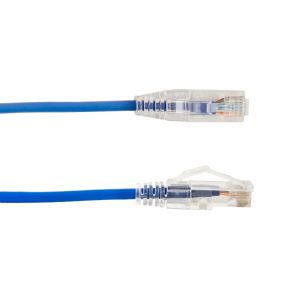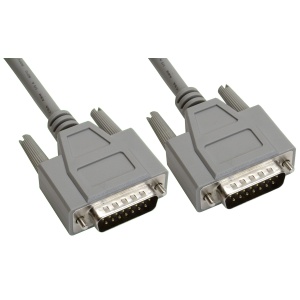In this electrifying world of ours, two devices stand out for professionals and DIY enthusiasts alike – digital multimeters and clamp meters. You may have heard these terms, maybe in passing or during a specific project, and wondered, “What’s the difference, anyway?” This article serves as your trusty roadmap, guiding you through the complex terrains of these two essential tools.
Introduction to Multimeters and Clamp Meters
In this arena of electrical measurement, understanding the difference between digital multimeters and clamp meters is crucial. It’s not just about knowing the definition of each but more about comprehending their features, usage, advantages, and limitations.
What is a Digital Multimeter?
Imagine you’re a detective, hunting for clues in an electrical system. Your best companion in this endeavor would be a digital multimeter (DMM). It’s an all-in-one tool used to measure voltage, current, and resistance. In the palm of your hand, a DMM provides a full suite of diagnostic capabilities.
What is a Clamp Meter?
Ever been in a tight spot while working on an electrical project? That’s where a clamp meter steps in. It’s a voltage measuring tool designed to “clamp” around an electrical conductor. This non-invasive buddy can measure high levels of current without the need to disrupt the circuit, making it a handy tool in the electrician’s toolkit.
Contrasting the Applications of Digital Multimeters and Clamp Meters
Knowing the function of these devices is half the battle. Now, let’s see them in action.
Usage of Digital Multimeters
Multimeters are the Swiss Army knives of electrical testing. They’re the go-to tools for troubleshooting electrical problems in a variety of appliances, from home refrigerators to complex circuits in industrial settings.
Usage of Clamp Meters
In contrast, clamp meters often find their niche in commercial and industrial environments. They shine when it comes to measuring high levels of AC current. Because they work without interrupting the circuit, they provide a safe and convenient way to check the flow of electricity.
Understanding the Features of Digital Multimeters and Clamp Meters
Getting under the hood of these devices, we find an array of features designed to make your electrical testing more efficient and reliable.
Digital Multimeter Features
Digital multimeters are renowned for their versatility. Equipped with a digital screen for precise readings, they offer an array of measurement options. They can measure voltage, resistance, and current (both AC and DC), and some even come with the ability to test diodes, transistors, and temperature.
Clamp Meter Features
Clamp meters are purpose-built for measuring high currents. They come with jaws that can clamp around a wire, enabling non-contact current readings. Some advanced models can measure voltage and resistance, but their strength lies in AC current measurement.
Understanding the Difference Between Digital Multimeters and Clamp Meters in Accuracy and Safety
Accuracy and safety are paramount in electrical measurement. Let’s see how our two contenders fare.
Accuracy of Digital Multimeters and Clamp Meters
Digital multimeters are generally more accurate than clamp meters, especially when measuring lower current levels. However, for high current readings, a clamp meter is a better choice, offering more accurate results without risking damage to the device or causing a safety hazard.
Safety Features of Digital Multimeters and Clamp Meters
When it comes to safety, both devices have their strengths. Multimeters are often protected against overloads, and clamp meters allow non-invasive current measurements. However, it’s crucial to use these devices as per their intended purpose and follow safety guidelines to avoid accidents.
Advantages and Limitations of Digital Multimeters and Clamp Meters
Like any tool, both digital multimeters and clamp meters have their strengths and limitations.
Advantages of Digital Multimeters
- Multifunctionality: Capable of measuring voltage, current, resistance, and more.
- High precision: Offers accurate readings for a wide range of measurements.
- Versatile: Suitable for troubleshooting a broad range of electrical issues.
Limitations of Digital Multimeters
- Limited Current Measurement: Not suitable for measuring high current levels.
- Invasive Measurement: Often requires physical contact with the circuit, posing safety risks.
Advantages of Clamp Meters
- High Current Measurement: Can measure high levels of AC current accurately.
- Non-invasive Measurement: Allows measurement without interrupting the circuit, enhancing safety.
Limitations of Clamp Meters
- Limited Functionality: Primarily used for current measurement, with fewer functions compared to multimeters.
- Less Accurate for Low Currents: May not provide accurate readings for low levels of current.
Choosing Between a Digital Multimeter and a Clamp Meter
After understanding the difference between digital multimeters and clamp meters, it’s time to choose the right tool for your needs.
When to Choose a Digital Multimeter
A digital multimeter is a right choice when you need a versatile tool for a broad range of measurements. If you’re troubleshooting a household appliance or working on a DIY electronics project, a multimeter will serve you well.
When to Choose a Clamp Meter
On the other hand, if your task involves measuring high levels of AC current or you’re working in an industrial or commercial environment, a clamp meter will be your best bet. Its ability to measure current non-invasively offers safety and convenience.
FAQ’s
- What’s the primary difference between a digital multimeter and a clamp meter?The primary difference lies in their functionality. A digital multimeter is a versatile tool capable of measuring voltage, current, resistance, and more. In contrast, a clamp meter specializes in non-invasive AC current measurements.
- Can a digital multimeter measure high current?Although digital multimeters can measure current, they are not suitable for high current measurements. For such tasks, a clamp meter is a safer and more accurate choice.
- Is a clamp meter safer than a digital multimeter?Safety depends more on the application and how the tools are used. While a clamp meter allows for non-invasive current measurements, reducing the risk of electrical shock, a digital multimeter often comes with overload protection.
- Do I need both a digital multimeter and a clamp meter?If you’re a professional electrician or regularly deal with a variety of electrical tasks, having both tools can be beneficial. A multimeter for its versatility and a clamp meter for its specialization in measuring high AC currents.
- Which is more accurate, a digital multimeter or a clamp meter?Digital multimeters are generally more accurate, especially for low-level measurements. However, when it comes to high current measurements, clamp meters typically provide more reliable results.
- Can a clamp meter measure DC current?Standard clamp meters are designed to measure AC current. However, some advanced models can measure DC current as well.
Conclusion
There’s no one-size-fits-all answer in the world of electrical measurement tools. Understanding the difference between digital multimeters and clamp meters helps you choose the right tool for your specific needs. Both have their strengths and limitations, and the best choice depends on your unique requirements. Remember, safety should always be your top priority when using these devices, so always read the instructions and follow the guidelines. Armed with this knowledge, you can now confidently navigate your way through your next electrical project!












